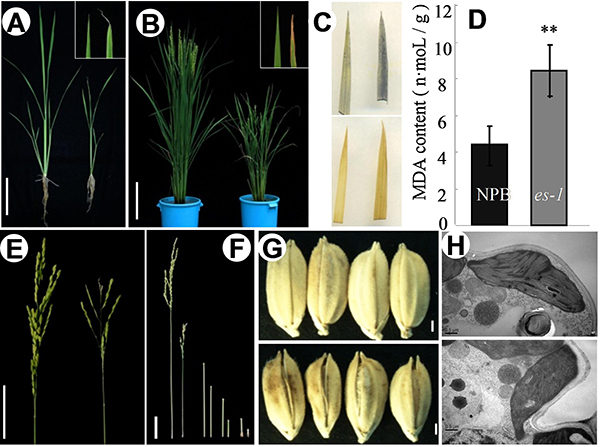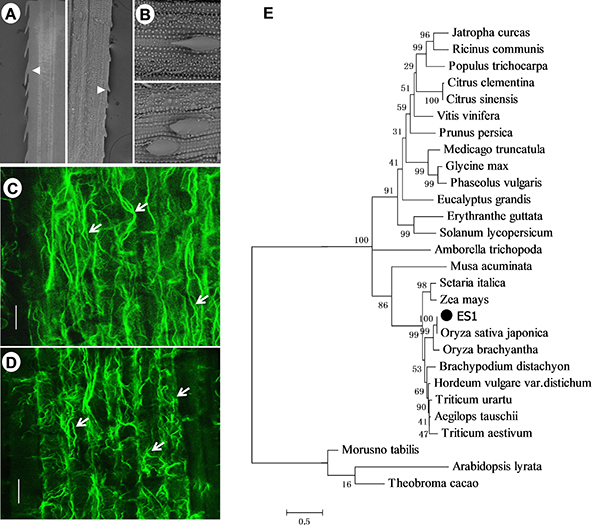






Progress on Genetic Mechanism of Water Loss in Rice
August 21st, 2015
The global problem of drought threatens agricultural production and constrains the development of sustainable agricultural practices. In plants, excessive water loss causes drought stress and induces early senescence. Severe water shortages restrict the expansion of rice production and hinder the irrigation of existing paddy fields. Recently, scientists from China National Rice Research Institute have yielded progress on genetic mechanism of water loss in rice.
In this study, CNRRI scientists isolated a rice (Oryza sativa.L) mutant, designated as early senescence 1 (es1-1), which exhibits early leaf senescence. The es1-1 leaves undergo water loss at the seedling stage (as reflected by whitening of the leaf margin and wilting) and display early senescence at the three-leaf stage. ES1 was cloned using map-based strategy, which encodes a SCAR-like protein 2, a component of the SCAR/WAVE complex involved in actin polymerization and function. Moreover, es1-1 mutants exhibited significantly higher stomatal density.

Phenotypes of wild-type and es1-1 plants
This resulted in excessive water loss and accelerated water flow in es1-1, also enhancing the water absorption capacity of the roots and water transport capacity of the stems, as well as promoting in vivo enrichment of metal ions co-transported with water. Expression of ES1 is higher in the leaves and leaf sheaths than in other tissues, consistent with its role in controlling water loss from leaves. GFP-ES1 fusion proteins were ubiquitously distributed in the cytoplasm of plant cells. Collectively, research data suggested that ES1 is important for regulating water loss in rice.

ES1 is a SCAR homolog
This work was supported by grants from the National Natural Science Foundation of China (31201183, 31221004, 31171531, 31171520, and 91435105), the State Key Basic Research Program (2013CBA01403), the Ministry of Agriculture of China for Transgenic Research (No.2013ZX08009003-001), and the China Postdoctoral Science Foundation (2014M561108).
This work has been published online on Plant Physiology on 1st August 2015(Doi: 10.1104). More details are available on the link bellow:
http://www.plantphysiol.org/content/early/2015/08/04/pp.15.00991
· Study Reveals How the Clock Component OsLUX Regulates Rice Heading
· Scientists Further Unravelled the Underlying Mechanism of Heading Date Control in Rice
· Improving the efficiency of prime editing in rice
· A New Infection Mechanism of Ustilaginoidea virens is Revealed
· Scientists Further Reveal the Infection Mechanism of Ustilaginoidea virens
CNRRI Today
Copyright © 2014- China National Rice Research Institute